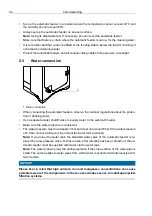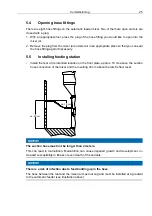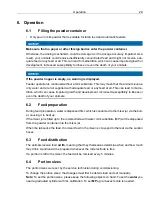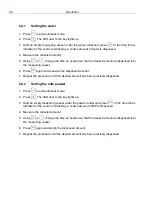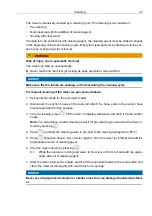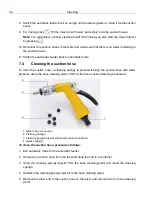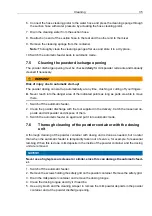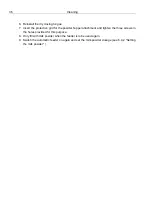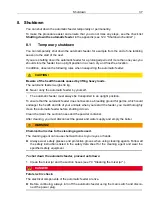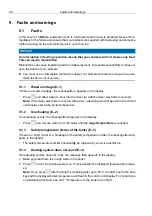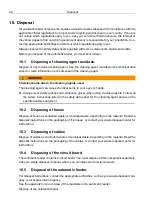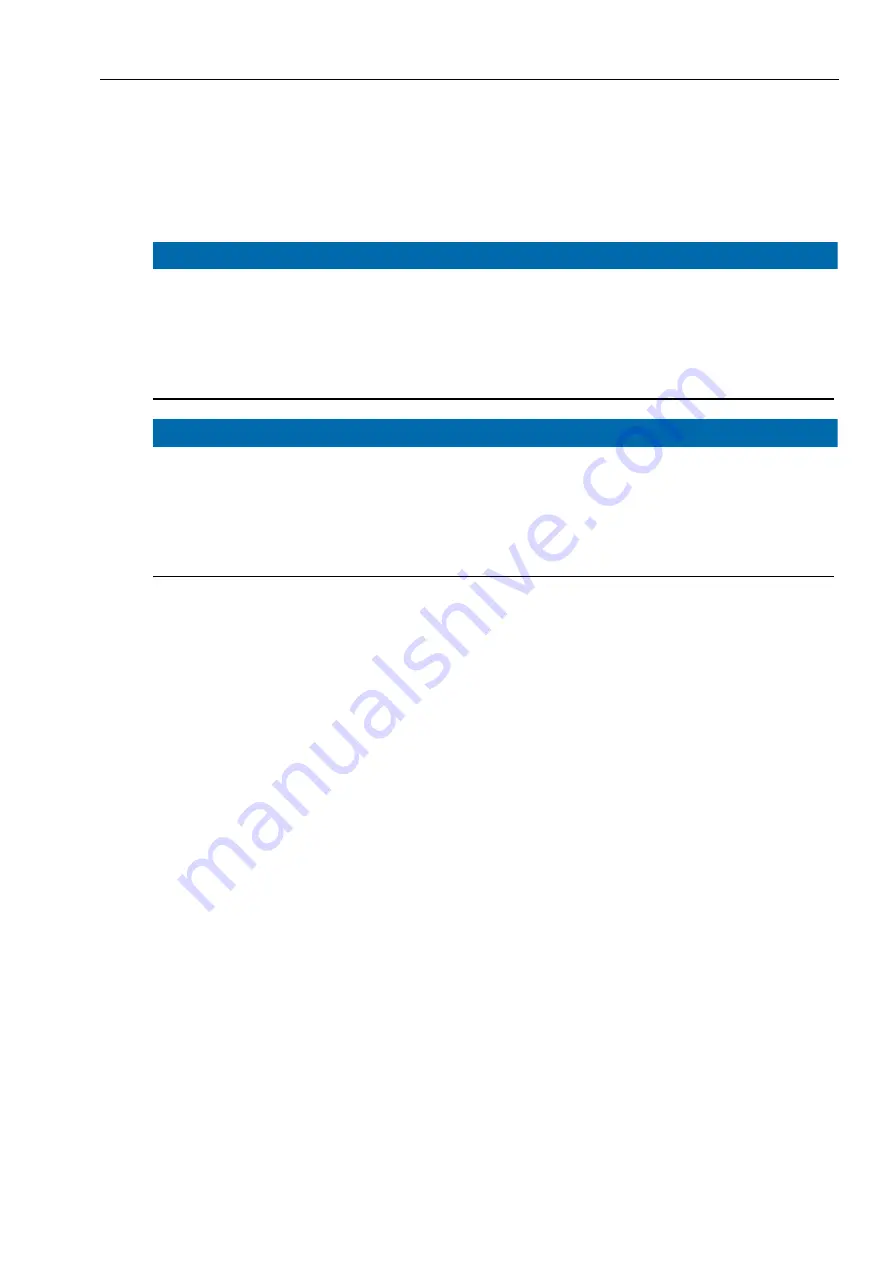
Operation
29
6. Operation
6.1
Filling the powder container
•
Only pour in milk powder that is suitable for lamb feed and automatic feeders.
NOTICE!
Make sure that no paper or other foreign bodies enter the powder container.
Otherwise, the dosing mechanism could be damaged or the dosage accuracy impaired. As a
result, your animals could receive insufficiently concentrated feed and might not receive ade-
quate feed or any feed at all. This can lead to malnutrition, which can cause impaired growth or
development, increased susceptibility to illness or even the death of your animals.
NOTICE!
If the powder hopper is empty, no warning is displayed.
Feeder operation is continued without a milk substitute. This may mean that the animals receive
only water and are not supplied with adequate feed or any feed at all. This can lead to malnu-
trition, which can cause impaired growth and development, increased susceptibility to illness or
even the death of your animals.
6.2
Feed preparation
During feed preparation, water is dispensed first, which is conducted to the mixer jar via the boil-
er, causing it to heat up.
If the mixer jar is filled up to the rod electrode with water, milk substitute (MP) will be dispensed
from the powder container into the mixer jar.
When the lab sucks the feed, the mixed feed in the mixer is conveyed to the teat via the suction
hoses.
6.3
Feed distribution
The animals receive feed
ad lib
, meaning that they themselves determine when and how much
they drink. A portion will be prepared whenever the rod electrode is free.
If a portion is left in the mixer, the feed will be remixed every 5 minutes.
6.4
Portion sizes
The portion sizes were set by the service technician during commissioning.
To change the portion sizes, the dosages must first be determined and set manually.
Note:
To set the portion sizes, please keep the following objects on hand: To set the
water
you
need a graduated cylinder with mL calibration. To set
MP
a gram-exact scale is needed.










